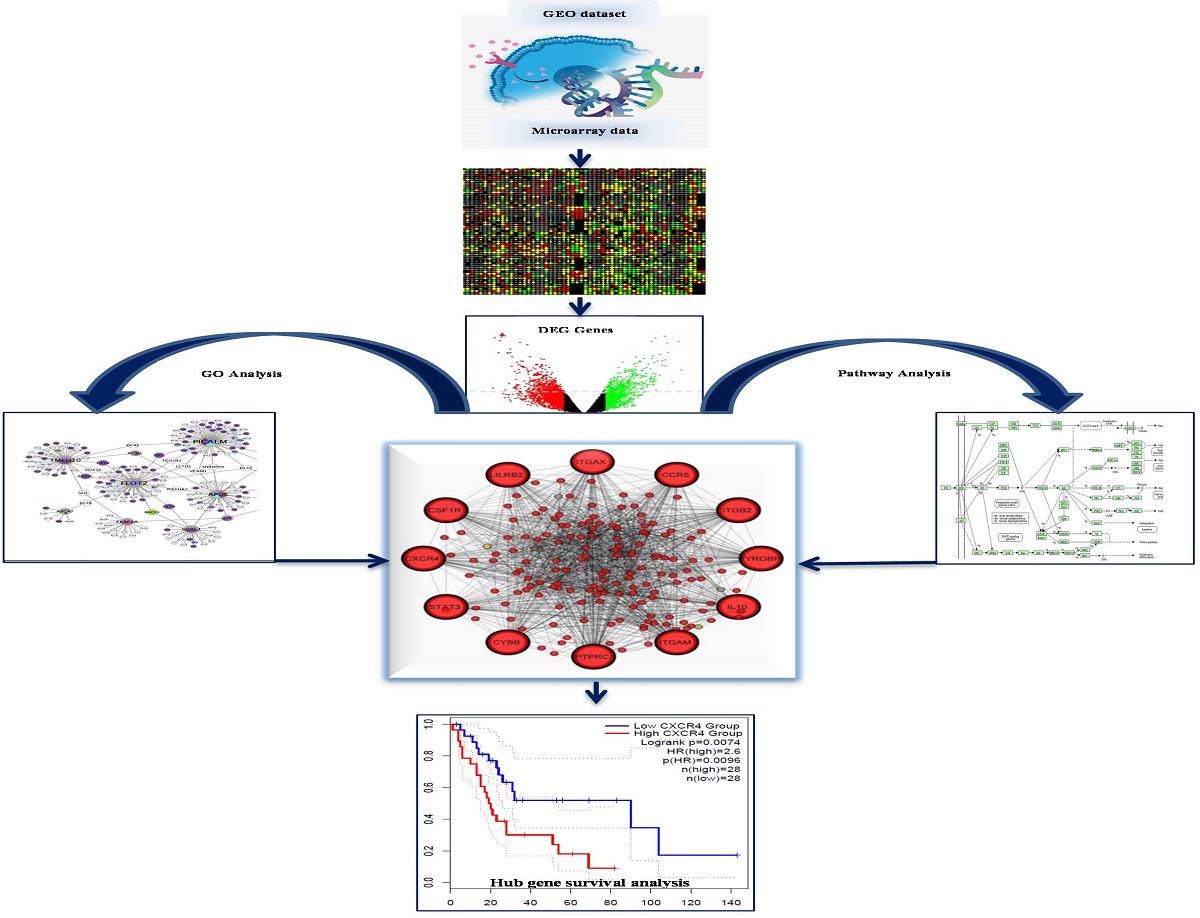Nowadays, cervical cancer (CC) is treated as the leading cancer among women throughout the world. Despite effective vaccination and improved surgery and treatment, CC remains its fatality rate about half of the infected populations globally. The major screening biomarkers and therapeutic target identification have now become a global concern. The present study, we have employed systems biology approaches to retrieve the potential biomarkers and pathways from the transcriptomic profiling. Initially, we have identified 76 of each up-regulated and down-regulated gene from a total of 4,643 differentially expressed genes. The up-regulatory genes are mainly concentrating on immune-inflammatory response and the down-regulatory genes are on receptor binding and gamma-glutamyltransferase. The involved pathways associated with these genes were also assessed through pathway enrichment and they were mainly focused on different cancer pathways, immunoresponse, and cell cycle pathways. After the subsequent enrichment of these genes, we have identified 12 hub genes, which play a crucial role in CC. Furthermore, the survival of the hub genes was also assessed, and among them, finally, CXCR4 has identified as one of the most potential differentially expressed gene that might play a vital role to the survival of CC patients. Thus CXCR4 could be used as a prognostic biomarker and development of a drug target for CC.

